A great example of ‘influencer advocacy’ caught my eye this week, in a Linked In post by Unilever’s Aline Santos about Justin Bieber’s social posting on the Popsicle brand. Influencer advocacy involves a celebrity picking up and promoting a product because they love the brand, not because they are being paid to do this, as is the case with ‘influencer marketing’.
In case you aren’t one of the 119 million ‘Beliebers’ who follows Justin on Instagram, here’s a quick re-cap of what you missed. On May 22nd Bieber tweeted that he and his manager, Scooter Braun, were frustrated at not finding the ‘Double Pop’ version of Popsicle and needed them back. Overnight, this dramatically increased the social reach of Popsicle on Twitter and especially Instagram (see social follower numbers below).
In this post I share some learning from how the Popsicle brand team positively responded to this event.

1. The power of the product
What I love most about the Popsicle example is how its all about the distinctive product, not some contrived, emotionally-focused ‘content’ campaign featuring Justin Bieber. This a great reminder that the claims of some experts that today a great product is irrelevant are talking bull**** ! Ensuring you have a brilliant products or service that both consumers and famous people want to talk about is the most potent way of generating authentic social media coverage.
2. Respond rapidly
Hats off to the Popsicle brand team for being agile enough to respond to Justin Bieber’s post on the day it came out, offering to try and provide some Double Pop Popsicles to Bieber and Braun. This response was all the more impressive because behind the scenes the brand team must have been working furiously with the supply chain folk to confirm a batch of Double Popsicles could be produced!
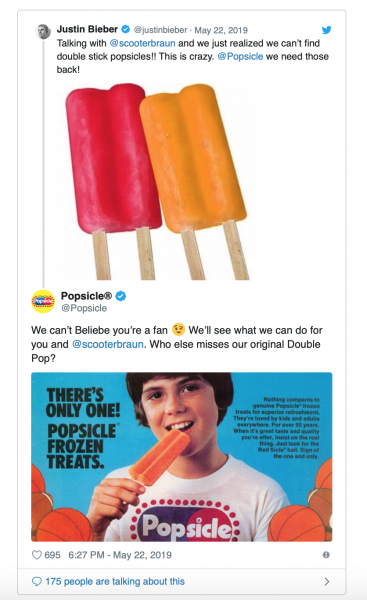
3. Keep up the momentum
The initial reply to Bieber was good. But the Popsicle brand went further by using subsequent posts to keep up the momentum and gain further exposure:
July 16: announcement of the limited batch being ready => re-tweeted by Braun
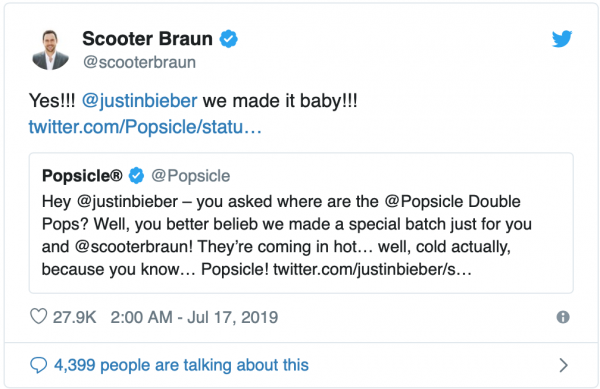
July 16: second post proposing to bring back the product for the public if the post received 100,000 retweets => replied to by Bieber

July 22: Popsicle announces that Double Popsicles would indeed be coming back, and asks for voting on flavours
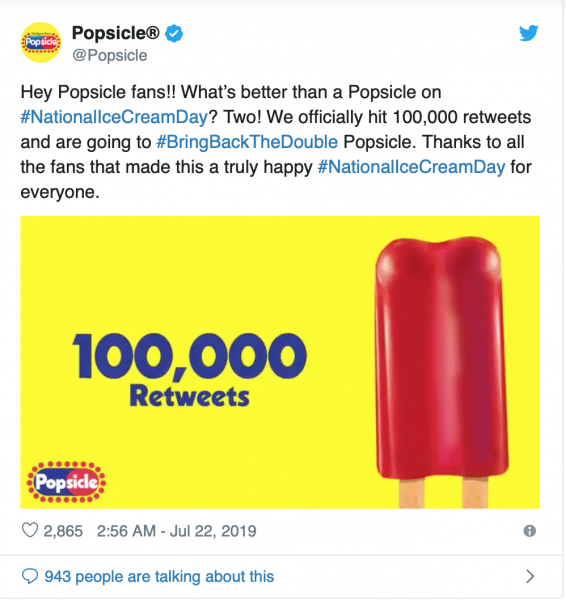
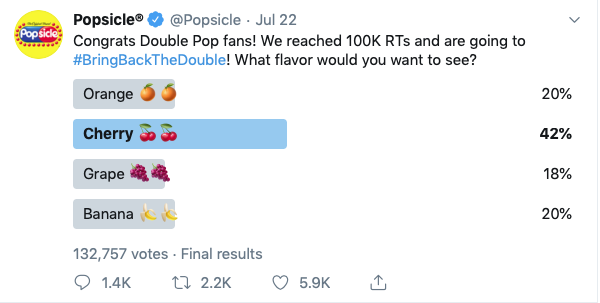
August 30: request for feedback on 3 possible pack designs
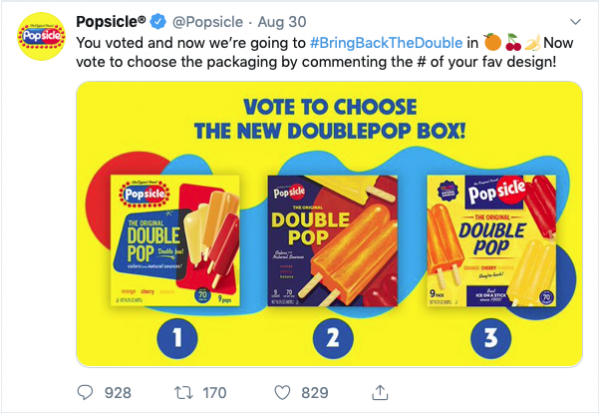
4. Have a clear brand positioning
The Popsicle example also shows the role played by a clear brand positioning to enable distinctive and rapid response in a digital age. Popsicle posted in a friendly, humorous way that brought to life the brand’s personality, and the posts were bright and colourful, capturing the spirit of summer.
In conclusion, Bieber’s boosting of Popsicle’s reach shows that in today’s digital age having a brilliant product and a clear positioning remain key to success. Rather than spending loads of time and buckets of cash paying a famous person to promote your brand, consider investing more in your product to make it worth talking about for free!
I’d love to get some data on brand and business impact of this social media exposure: if anyone from the Popsicle brand team can help out, please drop me an email!